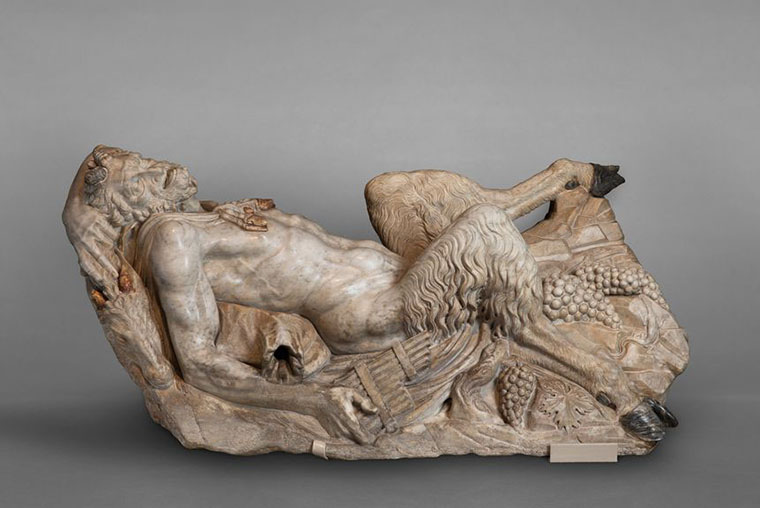
The Saint Louis Art Museum’s “Reclining Pan” (c.1535) is “the most important Renaissance sculpture in America.” So argues William E. Wallace, the Barbara Murphy Bryant Distinguished Professor of Art History in Arts & Sciences at Washington University in St. Louis, in a new appreciation for the Wall Street Journal.
Wallace, an internationally recognized authority on Michelangelo and his contemporaries, says that the Journal piece was inspired by his longtime colleague Mark S. Weil, the E. Desmond Lee Professor Emeritus for Collaboration in the Arts and former chair of Art History & Archaeology, who died last fall.
As a young professor arriving at WashU, “It was the work of art that Mark insisted I see first,” Wallace says, and “my introduction to St. Louis and the wonderful art museum.”
“I wrote this essay in honor of Mark.”

A God Takes a Break From Mischief
By William E. Wallace
Jan. 29, 2022
Imagine stumbling upon the cackling laughter of this leering, drunken goat-man in a darkened garden grotto. Between spreading thighs, his normally lusty manhood is thinly covered, having conceded all to drink—the wine or water trickling from the deflating wine sack. This is Pan, minor Greek deity, denizen of fields, flocks and forests. Lecherous satyrs, frenzied maenads and fat old Silenus are all part of Pan’s troupe, raucous followers of Bacchus, God of wine. For the startled spectator, the dribbling liquid, clusters of luscious grapes, and pan pipe are all enticements to join in revelry. But beware, for Bacchus and his associates are clever in leading us astray.
This marvelous sculpture found its way, perhaps unexpectedly, from the collection of Cardinal Francesco Barberini in Rome to St. Louis in 1947. Like so much art, furnishings and furniture that was transported to America in the 1940s and ’50s, Pan was a refugee from a war-torn and impoverished Europe.
The Barberini family acquired the sculpture for its prestigious art collection in the early 17th century. By then it was considered a classical antiquity, which is understandable given its pagan subject and the fact that it was carved from a once standing, ancient Roman statue, the evidence of which is clearly visible on the backside of the marble block. The brilliant alchemy of transforming an antique marble into a living, albeit inebriated, Pan has been variously attributed to artists ranging from Michelangelo to Bernini. Should we label the sculpture antique or Renaissance—or both? The word “Renaissance” means “rebirth”—of classical antiquity. This is a spectacular example of such rejuvenation.
Click here for the full text. (Wall Street Journal subscription required.)